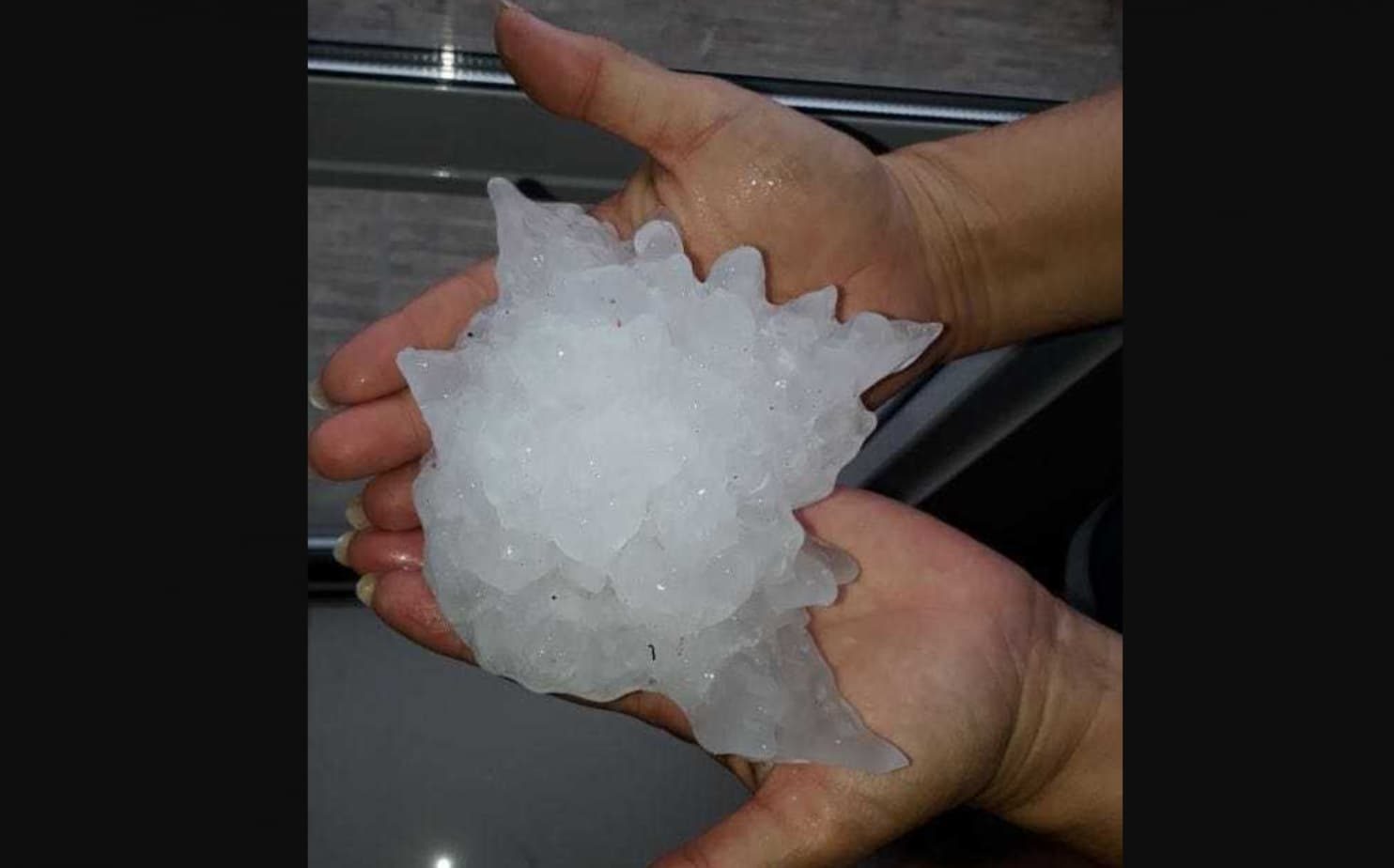Victoria Druetta hurriedly snagged one giant stone that fell in her neighborhood of Carlos Paz, snapped a photo of it and placed it in her freezer.
"The hail lasted 20 minutes. It was kind of scary," Druetta recalled. "It hit and then exploded and then melted some. It was probably even bigger."
The stone looks to be up to 18 centimeters in diameter - 7.1 inches - at its largest width, which could be a record for the Southern Hemisphere. It's about the same size as an average honeydew melon. The stone's unusual size made it difficult to measure because of its bumpy surface and because it melted a bit before Druetta put it down on a tape measure.
Videos show the behemoth hail stones landing like small meteors.
Hail can reach this size only if thunderstorm updrafts are strong enough to keep it suspended in the air. That would require vertical winds exceeding 120 mph.
As layers of ice glaze onto the growing stone, erratic winds high in the sky can carry it into dry regions. When that happens, the outside of the stone freezes faster than the inside. This has been shown to produce bizarre protrusions, which grow with each successive pass through the cloud. Once the stone becomes too heavy, it falls out of the cloud, sometimes faster than a major league baseball pitch.
In events like this, each hailstone contains so much water that fewer stones end up forming. That's why there's a large gap between where they strike - sometimes landing 20 or more feet apart. In one video, bewildered onlookers hunkered beneath a metal overhang can be heard remarking about "ice the size of sports balls," calling the spectacle "pure insanity." The stones shattering on the pavement sent shards flying 15 feet.
Spanning more than 2,500 miles north to south, Argentina has a wide variety of climates - including a severe weather season, which is peaking right now in Southern Hemisphere summer.
Comment: Indeed. Check out this downburst that took down a fully grown tree less than two weeks ago in Mar Del Plata, Argentina:
Dry air sinking down the east slopes of the Andes meets up with moist flow from the Atlantic Ocean. When the two air masses clash, a battleground can quickly develop. Storms Thursday unleashed torrential rains and damaging winds, flooding streets and whipping up a frenzy. But the real showstopper was the hail.
At over 7 inches, Druetta's stone falls short of the U.S. record holder, an 8-inch hailstone that fell in Vivian, S.D., on July 23, 2010. That one was eight inches across and weighed 1.93 pounds, making it the largest and heaviest to ever occur in the United States. While that appears to be a world record for size, it was not for weight.
The Argentina stone could claim second place for width, as well as be the biggest on record south of the equator. The World Meteorological Organization has not commented yet on this finding.
Comment: Weather on the planet is veering wildly across all extremes, in particular we're seeing serious cooling and its associated phenomena:
- Moscow buried in heaviest late January snowfall in 50 years (PHOTOS)
- Melted roads and bushfires strike Australia during catastrophic heatwave
- Winter of Discontent in France: Protests, Endless Dark Skies, And Crazy New Laws
- In Pictures: Traffic freezes as Spain is covered in snow
- Heavy snowfall continues to hit cities in Japan (VIDEOS)
- Heavy snowstorms spread across Morocco blocking 38 roads (VIDEOS)
- Desert town in Algeria is covered in snow for the second time this year (PHOTOS)
- Spectacular polar stratospheric clouds captured over Peru (PHOTOS)
- Lightning bolt kills 89 farm animals in South Africa




Reader Comments
to our Newsletter